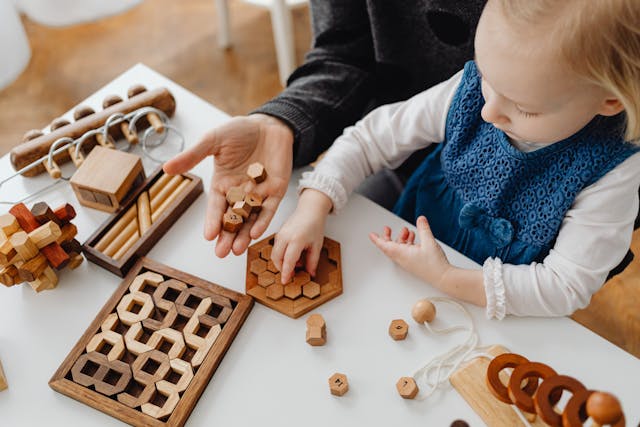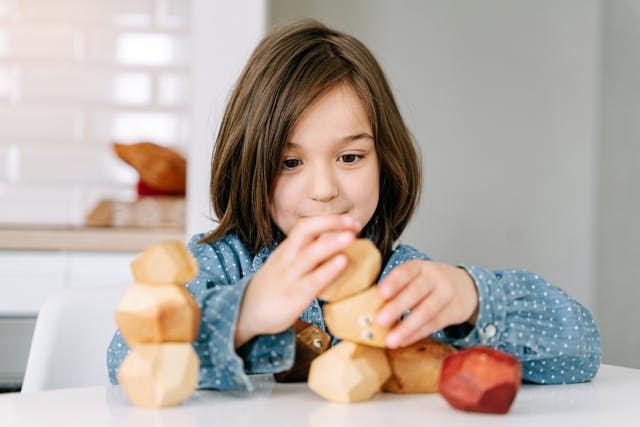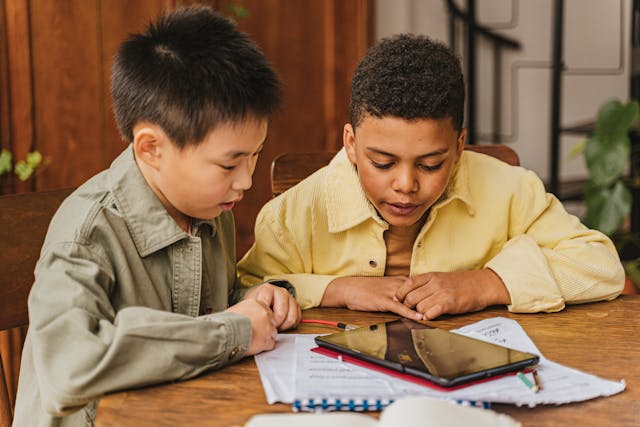Diaper changing is a fundamental part of parenting, but it doesn’t have to be time-consuming or stressful. Whether you’re a new parent or an experienced caregiver, mastering the art of fast diaper changing can save time and make the process smoother for both you and your baby. In this guide, we’ll cover essential tips and tricks to help you perfect your diaper-changing routine. Why Is Fast Diaper Changing Important? Newborns require frequent diaper changes—sometimes up to 10-12 times a day. Efficient diaper changes not only save time but also help prevent diaper rashes, keep your baby comfortable, and reduce fussiness. Learning to change diapers quickly also becomes beneficial when dealing with wiggly or fussy babies who don’t like to stay still for long. Essential Supplies for Quick Diaper Changes Before starting, make sure you have everything you need within arm’s reach. Being prepared minimizes interruptions and speeds up the process. Must-Have Items: Step-by-Step Guide to Fast Diaper Changing 1. Set Up Your Changing Area Always have a clean and safe changing station ready to go. A designated changing table or portable changing mat works well. Keep all essentials in a nearby organizer for easy access. 2. Distract Your Baby Many babies get fussy during diaper changes, so having a small toy, mobile, or singing a song can keep them entertained while you work quickly. 3. Open and Prepare the Clean Diaper First Before removing the dirty diaper, unfold and position the clean one beneath your baby. This helps streamline the process and minimizes the time your baby is exposed without a diaper. 4. Remove the Dirty Diaper Efficiently 5. Apply Diaper Cream If Needed If your baby is prone to diaper rashes, apply a thin layer of diaper cream before putting on the new diaper. 6. Secure the Clean Diaper Properly Lift your baby’s legs gently and slide the clean diaper underneath. Secure the tabs snugly but not too tight—there should be room for two fingers between the diaper and baby’s tummy. 7. Check for Leaks and Comfort Ensure the diaper’s edges around the legs are fluffed out to prevent leaks. If using cloth diapers, check that they’re fitted properly. 8. Dispose of the Dirty Diaper Quickly Dispose of or store the soiled diaper in a diaper pail or sealed bag immediately to reduce odors. Wash your hands or use hand sanitizer afterward. Speed Tips for Diaper Changing on the Go How to Handle a Squirmy Baby During Changes Babies become more active as they grow, making diaper changes more challenging. Here’s how to keep them still: Common Mistakes to Avoid During Diaper Changes Final Thoughts Mastering the art of fast diaper changing makes life easier for both parents and babies. With practice and the right setup, you can change diapers quickly while keeping your little one comfortable. By following these tips, you’ll be well on your way to stress-free diaper changes, whether at home or on the go!
Can Newborns Sleep with a Pacifier? Benefits, Risks, and Tips for Safe Use
Using a pacifier for a newborn during sleep is a common practice among parents. However, many wonder if it is safe and beneficial for their baby’s sleep routine. Experts suggest that allowing a newborn to sleep with a pacifier can offer several advantages, but it is essential to follow safety guidelines to minimize any risks. Is It Safe for a Newborn to Sleep with a Pacifier? Yes, newborns can sleep with a pacifier as long as it is used correctly. The American Academy of Pediatrics (AAP) recommends offering a pacifier at nap time and bedtime as it may reduce the risk of Sudden Infant Death Syndrome (SIDS). However, parents should ensure that the pacifier is used safely and does not interfere with feeding habits. Benefits of Letting a Newborn Sleep with a Pacifier 1. Reduces the Risk of SIDS Studies indicate that using a pacifier during sleep can lower the likelihood of Sudden Infant Death Syndrome (SIDS) by keeping the airway open and preventing deep sleep that can lead to breathing difficulties. 2. Provides Comfort and Soothing Sucking is a natural reflex for newborns, and a pacifier can help them self-soothe. This can be particularly useful for babies who have trouble settling down for sleep. 3. Helps with Sleep Routine A pacifier can serve as a cue for sleep, signaling to your baby that it is time to rest. This can establish a healthy sleep pattern over time. 4. May Help Preterm Babies For preterm infants, pacifier use has been linked to improved sucking reflexes, better digestion, and overall faster weight gain, which can be beneficial for their development. Potential Risks of Using a Pacifier for Sleep While pacifiers offer many advantages, there are some potential risks that parents should be aware of: 1. Dependency on the Pacifier Some babies become overly reliant on the pacifier to fall asleep, which can lead to difficulties if they wake up in the middle of the night and cannot find it. 2. Possible Impact on Breastfeeding Introducing a pacifier too early can interfere with breastfeeding. The AAP suggests waiting until breastfeeding is well established (around 3-4 weeks) before introducing a pacifier. 3. Increased Risk of Ear Infections Prolonged pacifier use has been linked to a higher incidence of middle ear infections. To minimize this risk, limit pacifier use to nap and bedtime only. 4. Dental Issues (If Used Long-Term) Extended pacifier use beyond 2-3 years of age may contribute to dental problems such as misalignment or an overbite. How to Use a Pacifier Safely During Sleep If you choose to let your newborn sleep with a pacifier, follow these safety tips: 1. Choose the Right Pacifier Opt for a one-piece pacifier made of durable, BPA-free material with a vented shield to prevent choking hazards. 2. Never Attach a Pacifier to a String or Clip Avoid using pacifier clips or strings during sleep as they can pose a strangulation risk. 3. Do Not Force the Pacifier If your baby rejects the pacifier, do not force it. Some infants simply do not like using one, and that is completely fine. 4. Keep the Pacifier Clean Wash and sterilize the pacifier regularly to prevent infections. For newborns under six months, boiling or using a sterilizer is recommended. 5. Avoid Using Sweeteners Never dip the pacifier in honey, sugar, or any sweetener, as this can increase the risk of cavities and bacterial infections. 6. Replace When Necessary Check the pacifier regularly for signs of wear or damage and replace it as needed to ensure safety. When to Wean a Baby Off the Pacifier While pacifiers can be beneficial, it is recommended to start weaning around 6-12 months to prevent long-term dependency and dental issues. By age 2, most children should be fully transitioned away from pacifiers. Final Thoughts Allowing a newborn to sleep with a pacifier can provide comfort and significant benefits, including a reduced risk of SIDS. However, it is essential to use pacifiers safely and avoid potential risks such as dependency or breastfeeding interference. By following best practices, parents can ensure their baby’s safety and well-being while using a pacifier as part of a healthy sleep routine. Would you let your newborn sleep with a pacifier? Share your experiences in the comments below!
Perineal Massage: Benefits, Techniques, and Tips for Expecting Mothers
Perineal massage is a technique that involves gently stretching and massaging the perineum—the area between the vaginal opening and the anus—to prepare for childbirth. This practice has been shown to reduce the likelihood of perineal tears and the need for an episiotomy during labor. Incorporating perineal massage into a prenatal routine can help increase the perineum’s flexibility, making the birthing process smoother and more comfortable. What Is Perineal Massage? Perineal massage is a hands-on technique used in the weeks leading up to childbirth. It involves applying gentle pressure and stretching motions to the perineal tissue to improve elasticity. Expectant mothers or their partners can perform the massage to help prepare the body for the physical demands of delivery. Why Is Perineal Massage Important? The perineum undergoes significant stretching during vaginal birth. Without preparation, this area may tear naturally or require an episiotomy. Perineal massage helps condition the perineal tissues, promoting greater flexibility and reducing trauma during delivery. Studies have shown that women who practice perineal massage in the last weeks of pregnancy have a lower risk of perineal trauma and experience a faster postpartum recovery. Benefits of Perineal Massage Numerous studies and anecdotal evidence suggest that perineal massage provides several benefits, including: 1. Reduces the Risk of Perineal Tears During vaginal delivery, the perineum stretches to accommodate the baby’s head. Perineal massage helps improve tissue elasticity, reducing the risk of tearing. 2. Lowers the Need for an Episiotomy An episiotomy is a surgical incision made in the perineum to widen the vaginal opening. Perineal massage has been found to decrease the need for this procedure, leading to a more natural birthing experience. 3. Enhances Postpartum Recovery By reducing the likelihood of tearing or the need for an episiotomy, perineal massage can lead to a faster and less painful postpartum recovery. Less damage to the perineal area means fewer stitches, less discomfort, and a reduced risk of infection. 4. Increases Perineal Flexibility Regular massage can help the perineal muscles stretch more easily, making childbirth less traumatic for the tissues. It also allows mothers to familiarize themselves with the stretching sensations they will experience during labor. 5. Reduces Discomfort During Delivery The technique helps prepare the perineal area for the sensations experienced during birth, potentially reducing pain and discomfort. Women who practice perineal massage may also feel more in control during delivery. When to Start Perineal Massage Healthcare professionals typically recommend starting perineal massage around 34 to 36 weeks of pregnancy. Performing the massage 2 to 3 times per week for about 5 to 10 minutes can be effective in preparing the perineum for delivery. How to Perform Perineal Massage Step 1: Prepare the Area Step 2: Position Yourself Step 3: Begin the Massage Step 4: Breathe and Relax Tips for Effective Perineal Massage Who Should Avoid Perineal Massage? Perineal massage is generally safe, but certain conditions may require medical guidance: Alternative Methods to Prepare the Perineum If perineal massage is uncomfortable or not suitable for you, consider alternative techniques to improve perineal elasticity: Does Perineal Massage Work for Everyone? While many women report positive outcomes, perineal massage is not a guaranteed method for preventing perineal tears. Other factors, such as baby size, birth position, and the speed of labor, also influence perineal outcomes. However, it remains a useful technique that can increase a mother’s confidence and readiness for delivery. Final Thoughts Perineal massage is a simple yet effective technique to prepare the body for childbirth. By incorporating this practice into a prenatal routine, expecting mothers can reduce the risk of perineal trauma and enhance their postpartum recovery. As with any prenatal practice, consulting with a healthcare provider before starting perineal massage is always recommended to ensure safety and effectiveness.
Prenatal Yoga: Benefits, Poses, and Safety Tips for Expecting Moms
Pregnancy is a transformative journey filled with excitement and changes in the body. One of the best ways to stay healthy, reduce stress, and prepare for childbirth is through prenatal yoga. This ancient practice offers a safe and effective way for expecting mothers to maintain flexibility, build strength, and foster a deep connection with their growing baby. In this guide, we’ll explore the benefits of prenatal yoga, safe poses for each trimester, and essential tips to ensure a healthy and enjoyable practice. What Is Prenatal Yoga? Prenatal yoga is a specialized form of yoga designed for pregnant women. It focuses on gentle movements, controlled breathing, and relaxation techniques to support both the mother and baby. Unlike traditional yoga, prenatal yoga avoids poses that could put strain on the belly or cause discomfort, ensuring a safe and effective workout. Benefits of Prenatal Yoga Practicing prenatal yoga provides numerous physical, emotional, and mental benefits, making it an excellent choice for expecting mothers. Some of the key benefits include: 1. Improves Flexibility and Strength Prenatal yoga strengthens the muscles needed for labor and delivery, particularly in the core, back, and pelvic floor. It also enhances flexibility, making movement easier as the belly grows. 2. Reduces Pregnancy Discomfort Common pregnancy discomforts like back pain, swollen ankles, and nausea can be alleviated through yoga poses that improve circulation, posture, and relaxation. 3. Enhances Relaxation and Stress Relief Breathing exercises and meditation techniques in prenatal yoga help lower stress hormones and promote a sense of calm. This can be beneficial in managing pregnancy-related anxiety and improving sleep quality. 4. Prepares the Body for Labor and Delivery Certain yoga poses and breathing techniques mimic the natural rhythms of labor, helping the body become more accustomed to contractions and relaxation during childbirth. 5. Promotes Bonding with Baby Prenatal yoga encourages mindfulness, allowing mothers to focus on their growing baby. This practice strengthens the emotional bond between mother and child. 6. Encourages a Supportive Community Attending prenatal yoga classes provides a supportive environment where expecting mothers can share their experiences and form connections with others going through the same journey. Best Prenatal Yoga Poses for Each Trimester First Trimester (Weeks 1-12) During the first trimester, energy levels may fluctuate, and morning sickness can be challenging. Gentle stretching and breathing exercises can help ease discomfort. Second Trimester (Weeks 13-27) This is often the most comfortable stage of pregnancy, making it an ideal time to focus on strength and stability. Third Trimester (Weeks 28-40) As the belly grows, balance and comfort become top priorities. Gentle movements and breathing exercises can help with relaxation and labor preparation. Safety Tips While prenatal yoga is generally safe, there are important precautions to keep in mind: Prenatal Yoga vs. Regular Yoga: What’s the Difference? Prenatal yoga differs from regular yoga in several ways to ensure the safety of both the mother and baby: When to Avoid Prenatal Yoga Though prenatal yoga is generally beneficial, certain conditions may require extra caution. Avoid yoga if you experience: If you are unsure, always consult your healthcare provider before continuing your practice. Final Thoughts Prenatal yoga is an excellent way for expecting mothers to stay active, reduce stress, and prepare for childbirth. By following safe and gentle practices, you can experience a healthier and more enjoyable pregnancy. Whether you’re a beginner or an experienced yogi, prenatal yoga provides physical and emotional benefits that support both you and your baby throughout this incredible journey. If you’re new to yoga, consider joining a prenatal yoga class or following online sessions guided by certified instructors to ensure a safe and supportive experience. Embrace the power of prenatal yoga and enjoy a healthier, happier pregnancy!
Postpartum Depression: Signs, Causes, and Treatment
Bringing a new life into the world is an incredible experience, but it also comes with significant emotional and physical changes. Many new mothers experience a mix of emotions after childbirth, from joy to exhaustion. However, when feelings of sadness, hopelessness, or anxiety persist, they may indicate postpartum depression (PPD). Understanding the symptoms, causes, and treatments of PPD can help new mothers seek the support they need. What Is Postpartum Depression? Postpartum depression is a mood disorder that affects some women after childbirth. It is more intense and long-lasting than the typical “baby blues,” which are temporary feelings of sadness, mood swings, and fatigue that many new mothers experience. Unlike baby blues, which usually resolve within two weeks, PPD can persist for months and interfere with a mother’s ability to care for herself and her baby. Signs and Symptoms of Postpartum Depression PPD symptoms can vary from mild to severe and may include: If a mother experiences any of these symptoms, it’s essential to seek medical help as soon as possible. Causes and Risk Factors of Postpartum Depression PPD does not have a single cause. Instead, it results from a combination of physical, emotional, and lifestyle factors. Some of the main contributors include: 1. Hormonal Changes After childbirth, the levels of estrogen and progesterone drop suddenly, leading to chemical changes in the brain that can trigger mood swings and depressive symptoms. 2. Sleep Deprivation Caring for a newborn is exhausting, and lack of sleep can make it harder to cope with daily stress, leading to feelings of anxiety and depression. 3. Emotional Stress Adjusting to motherhood, feeling overwhelmed by responsibilities, or struggling with self-doubt can contribute to the onset of PPD. 4. History of Depression Women with a personal or family history of depression or anxiety disorders are at a higher risk of developing PPD. 5. Lack of Support A lack of emotional, physical, or financial support from family and friends can increase feelings of isolation and stress, making PPD more likely. 6. Complications During Birth Difficult labor, premature birth, or medical complications for the baby can increase a mother’s stress levels and contribute to postpartum depression. How to Diagnose Postpartum Depression If a new mother suspects she has PPD, she should consult a healthcare provider. Doctors use screening tools like the Edinburgh Postnatal Depression Scale (EPDS) to assess symptoms. They may also perform physical exams and review medical histories to rule out other conditions that can cause similar symptoms. Treatment Options for Postpartum Depression PPD is a treatable condition, and several approaches can help new mothers recover. The best treatment plan depends on the severity of the symptoms and personal circumstances. 1. Therapy and Counseling 2. Medication 3. Lifestyle Changes 4. Hormone Therapy In some cases, hormone replacement therapy may help balance estrogen levels and alleviate symptoms of PPD. Preventing Postpartum Depression While PPD cannot always be prevented, taking proactive steps can reduce the risk: When to Seek Help If symptoms of postpartum depression persist for more than two weeks, interfere with daily life, or include thoughts of self-harm, seeking medical help is crucial. Early treatment can make a significant difference in a mother’s recovery. Final Thoughts Postpartum depression is a common but serious condition that requires attention and care. Understanding its signs, causes, and treatments can empower new mothers to seek help and recover. With proper support, treatment, and self-care, mothers can overcome PPD and build a strong, loving bond with their baby. If you or someone you know is struggling with postpartum depression, don’t hesitate to reach out to a healthcare professional or a support group for guidance and assistance.
Best Online Learning Platforms for Kids in 2025
In today’s digital age, online learning has become an essential part of education. With technology advancing rapidly, parents now have access to numerous online learning platforms that provide high-quality, engaging, and interactive education for their children. Whether you’re looking for supplemental learning, homeschooling resources, or fun educational games, the best online learning platforms for kids in 2025 offer a variety of tools to support every child’s educational journey. Why Choose Online Learning for Kids? Online learning platforms offer several benefits, including: Top Online Learning Platforms for Kids in 2025 1. ABCmouse ABCmouse remains one of the most popular learning platforms for kids aged 2-8. With a structured curriculum covering reading, math, science, and art, ABCmouse provides interactive lessons, songs, and puzzles to engage young learners. Key Features: 2. Khan Academy Kids Khan Academy Kids offers free educational resources for children aged 2-7. The platform focuses on developing early literacy, math, and critical thinking skills through stories, games, and engaging activities. Key Features: 3. Adventure Academy Designed for kids aged 8-13, Adventure Academy combines education with a virtual world where children can learn through quests and adventures. This platform is great for developing reading comprehension, math, and critical thinking skills in an engaging environment. Key Features: 4. Outschool Outschool is a unique platform that offers live, interactive classes led by qualified teachers. It covers a wide range of subjects, from traditional academics to niche interests like Minecraft coding and creative writing. Key Features: 5. Duolingo Kids If you want your child to learn a new language, Duolingo Kids is a fantastic option. This app makes language learning fun and interactive with bite-sized lessons and engaging visuals. Key Features: 6. CodeSpark Academy For kids interested in coding, CodeSpark Academy introduces programming concepts through fun games and activities. It teaches logical thinking and problem-solving skills in an engaging way. Key Features: 7. BrainPOP BrainPOP is a well-known educational platform that provides animated videos on various subjects, including science, math, social studies, and health. It is widely used in schools and is great for kids aged 6-14. Key Features: How to Choose the Best Online Learning Platforms for kids When selecting an online learning platform for your child, consider the following factors: Final Thoughts The best online learning platforms for kids in 2025 offer a variety of engaging, interactive, and educational content that can supplement traditional learning. Whether your child is just starting preschool or exploring advanced subjects, these platforms provide valuable tools to help them succeed academically. By choosing the right platform based on your child’s needs and interests, you can create an enjoyable and effective learning experience that fosters lifelong curiosity and knowledge. With so many great options available, online learning has never been more accessible or exciting for children. Explore these platforms today and help your child embark on a rewarding educational journey!
Breastfeeding Newborn: A Complete Guide for New Moms
Breastfeeding a newborn is one of the most natural and beneficial ways to nourish your baby. It provides essential nutrients, strengthens the bond between mother and child, and supports the baby’s immune system. However, breastfeeding can come with challenges, especially for first-time moms. Understanding the process, benefits, and best practices can make the experience smoother and more rewarding. Why Breastfeeding Is Important Breastfeeding offers a wide range of health benefits for both the baby and the mother. Here are some key reasons why it is highly recommended: 1. Nutritional Superiority Breast milk contains all the essential nutrients a newborn needs in the first six months of life. It has the perfect balance of proteins, fats, and vitamins necessary for healthy growth. 2. Strengthens Immunity Colostrum, the first milk produced after birth, is packed with antibodies that help protect newborns from infections and diseases. Regular breastfeeding continues to support the baby’s immune system. 3. Promotes Healthy Growth and Development Breastfeeding has been linked to higher cognitive development, better digestion, and lower risks of obesity, diabetes, and respiratory infections later in life. 4. Enhances Mother-Baby Bonding Skin-to-skin contact during breastfeeding helps strengthen the emotional connection between mother and baby. It also releases oxytocin, the “love hormone,” which promotes relaxation and bonding. 5. Benefits for Mothers Breastfeeding helps the uterus contract after birth, reducing postpartum bleeding. It also lowers the risk of breast and ovarian cancers and supports postpartum weight loss. Getting Started with Breastfeeding 1. Understanding the Latch A proper latch is crucial for a comfortable and effective breastfeeding experience. Signs of a good latch include: If breastfeeding is painful, try adjusting your baby’s position or seek help from a lactation consultant. 2. Feeding on Demand Newborns have small stomachs and need frequent feedings, typically every 2-3 hours. Watching for hunger cues like sucking on hands, rooting, or fussiness can help ensure your baby is fed before they start crying. 3. Finding a Comfortable Position Experimenting with different breastfeeding positions can help both you and your baby find a comfortable routine. Popular positions include: Common Breastfeeding Challenges and Solutions Breastfeeding a newborn isn’t always easy, and new mothers may face several challenges. Here are some common issues and ways to overcome them: 1. Sore or Cracked Nipples Painful nipples can result from improper latching or prolonged feeding. To prevent and treat soreness: 2. Low Milk Supply If you’re concerned about not producing enough milk, try these tips: 3. Engorgement and Blocked Ducts Full, swollen breasts can be painful and make latching difficult. To relieve engorgement: 4. Baby Refusing the Breast Sometimes, a newborn may struggle to latch or seem uninterested in breastfeeding. Reasons could include: Trying skin-to-skin contact, changing positions, and feeding in a quiet, dimly lit room may help encourage breastfeeding. Diet and Hydration for Breastfeeding Moms A healthy diet supports milk production and overall well-being. Here are some nutritional tips for breastfeeding mothers: When to Seek Help If you experience persistent breastfeeding challenges, don’t hesitate to reach out for support. Lactation consultants, pediatricians, and support groups can provide guidance and reassurance. Final Thoughts Breastfeeding a newborn is a learning process that requires patience and dedication. While challenges may arise, understanding the basics and seeking help when needed can make the journey smoother. Remember, every mother-baby pair is unique—what works for one may not work for another. Focus on what’s best for you and your baby, and enjoy the special bond that breastfeeding fosters.
Montessori or Traditional Education: Which Is Best for Your Child?
Education plays a crucial role in shaping a child’s future, and choosing the right learning environment is one of the most important decisions a parent can make. Two of the most popular educational approaches are Montessori and traditional education. Each method has unique philosophies, teaching styles, and benefits. Understanding the key differences can help you determine which approach is best suited for your child’s needs. What Is Montessori Education? Montessori education is a child-centered learning approach developed by Dr. Maria Montessori in the early 1900s. It emphasizes independence, hands-on learning, and self-paced development. Montessori classrooms are designed to encourage exploration and curiosity, allowing children to learn through practical experiences rather than direct instruction. Key Features of Montessori Education: What Is Traditional Education? Traditional education follows a structured, teacher-led approach that has been the standard for decades. It emphasizes academic achievement through textbooks, lectures, and assessments. Key Features of Traditional Education: Comparing Montessori and Traditional Education Understanding the key differences between Montessori and traditional education can help parents determine the best fit for their child. 1. Learning Style 2. Classroom Environment 3. Pace of Learning 4. Role of the Teacher 5. Social Development 6. Evaluation and Assessment Pros and Cons of Montessori Education Pros: Cons: Pros and Cons of Traditional Education Pros: Cons: How to Choose the Right Education for Your Child Every child is unique, and selecting the best education system depends on their learning style, personality, and future goals. Consider Montessori Education If: Consider Traditional Education If: Final Thoughts Both Montessori and traditional education have their strengths and challenges. The best choice depends on your child’s unique needs, personality, and learning style. By understanding the differences, parents can make informed decisions to provide their children with the best possible educational foundation. Whether choosing Montessori or traditional education, the ultimate goal is to support and nurture a child’s love for learning.
Raising a Smart Kid: Proven Strategies for Academic Success
Every parent wants their child to thrive academically and develop a strong intellectual foundation. Raising a smart kid isn’t just about genetics—it involves creating an environment that nurtures curiosity, critical thinking, and a love for learning. By applying effective parenting strategies, you can set the stage for your child’s lifelong academic success. 1. Encourage a Growth Mindset A growth mindset is the belief that intelligence and abilities can develop through effort and learning. Raising a smart kid that mistakes are part of learning and that challenges help them grow. Encourage perseverance by praising their effort rather than just their natural talents. How to Promote a Growth Mindset: 2. Create a Learning-Friendly Environment A stimulating environment plays a crucial role in cognitive development. Ensure your home has a dedicated, quiet space for studying, reading, and exploring new concepts. Ways to Build a Learning-Conducive Space: 3. Foster a Love for Reading Reading is one of the most powerful ways to boost cognitive skills, vocabulary, and comprehension. The earlier you introduce books, the more likely your child will develop a lifelong love for reading. How to Instill a Reading Habit: 4. Support Curiosity and Exploration Smart kids are naturally curious. Encourage your child to ask questions, explore different interests, and seek answers beyond what is taught in school. How to Nurture Curiosity: 5. Teach Problem-Solving Skills Critical thinking and problem-solving are essential for academic and real-life success. Children who develop these skills can approach challenges with confidence and creativity. Ways to Improve Problem-Solving Abilities: 6. Promote a Healthy Lifestyle A healthy mind needs a healthy body. Proper nutrition, exercise, and adequate sleep significantly impact cognitive function and academic performance. Healthy Habits for a Smart Kid: 7. Engage in Meaningful Conversations Engaging in thoughtful discussions with your child enhances vocabulary, comprehension, and critical thinking. Make conversations interactive and thought-provoking. How to Improve Verbal Intelligence: 8. Set Realistic Academic Goals Helping your child set and achieve academic goals instills motivation and a sense of accomplishment. Guide them in breaking down long-term goals into manageable steps. Effective Goal-Setting Strategies: 9. Limit Excessive Screen Time While technology can be a valuable educational tool, too much screen time can negatively impact attention span and social skills. Screen Time Management Tips: 10. Be Actively Involved in Their Education Parental involvement significantly impacts academic success. Show interest in what your child is learning and collaborate with teachers to support their progress. Ways to Stay Involved: Conclusion Raising a smart kid requires patience, encouragement, and a nurturing environment. By fostering curiosity, critical thinking, and a love for learning, you can help your child build a strong academic foundation. Implement these proven strategies, and watch your child develop the confidence and skills needed for lifelong success.
The Best Learning Activities for Kids: Boost Your Child’s Brain Development
As parents, we all want to provide our children with the best opportunities to grow and succeed. One of the most effective ways to support their development is through engaging and educational activities. Learning activities for kids should be fun, interactive, and designed to stimulate their cognitive, social, and physical skills. In this article, we’ll explore the best learning activities for kids that can enhance brain development and foster a love for learning. Why Are Learning Activities Important for Kids? Children’s brains develop rapidly during their early years, making it crucial to engage them in meaningful activities that encourage problem-solving, creativity, and critical thinking. Learning activities help kids: Best Learning Activities for Kids 1. Storytelling and Reading Reading and storytelling play a crucial role in cognitive and language development. Encourage your child to read daily, listen to audiobooks, or create their own stories. This activity improves vocabulary, comprehension, and imagination. 2. Hands-On Science Experiments Simple science experiments, like making a volcano with baking soda and vinegar, teach kids about cause and effect. Hands-on experiments develop critical thinking and problem-solving skills while making science fun and engaging. 3. Arts and Crafts Creative activities such as drawing, painting, and crafting help develop fine motor skills and self-expression. Encourage your child to use different materials to create their artwork, boosting their creativity and confidence. 4. Puzzle Games and Brain Teasers Puzzles, memory games, and board games help children enhance their problem-solving and analytical thinking skills. Activities like jigsaw puzzles, Sudoku, and matching games promote logical reasoning and patience. 5. Music and Movement Listening to music, playing instruments, and dancing improve coordination, rhythm, and cognitive development. Studies show that children exposed to music from a young age perform better in math and language skills. 6. Outdoor Exploration and Nature Walks Exploring nature provides children with hands-on learning experiences. Whether it’s collecting leaves, observing insects, or identifying different bird sounds, outdoor activities improve observation skills and curiosity about the world. 7. Cooking and Baking Cooking with kids teaches them basic math (measuring ingredients), science (understanding how ingredients interact), and fine motor skills. Simple recipes like making sandwiches or baking cookies provide a fun and educational experience. 8. Building and Construction Play Using blocks, LEGO sets, or magnetic tiles enhances spatial awareness, problem-solving skills, and creativity. Children develop hand-eye coordination and engineering concepts while having fun building structures. 9. Role-Playing and Pretend Play Encourage imaginative play by providing costumes, dolls, and props for children to create their own stories. Role-playing activities help kids develop empathy, social skills, and problem-solving abilities. 10. Gardening and Planting Teaching kids to plant and care for a garden instills responsibility and patience. Gardening helps them understand nature, life cycles, and the importance of caring for the environment. How to Make Learning Activities More Effective Final Thoughts Providing your child with engaging and educational activities is one of the best ways to support their brain development. Learning activities for kids should be enjoyable, hands-on, and tailored to their unique interests. By incorporating these activities into their daily routine, you’ll help them build essential life skills while fostering a lifelong love for learning.










